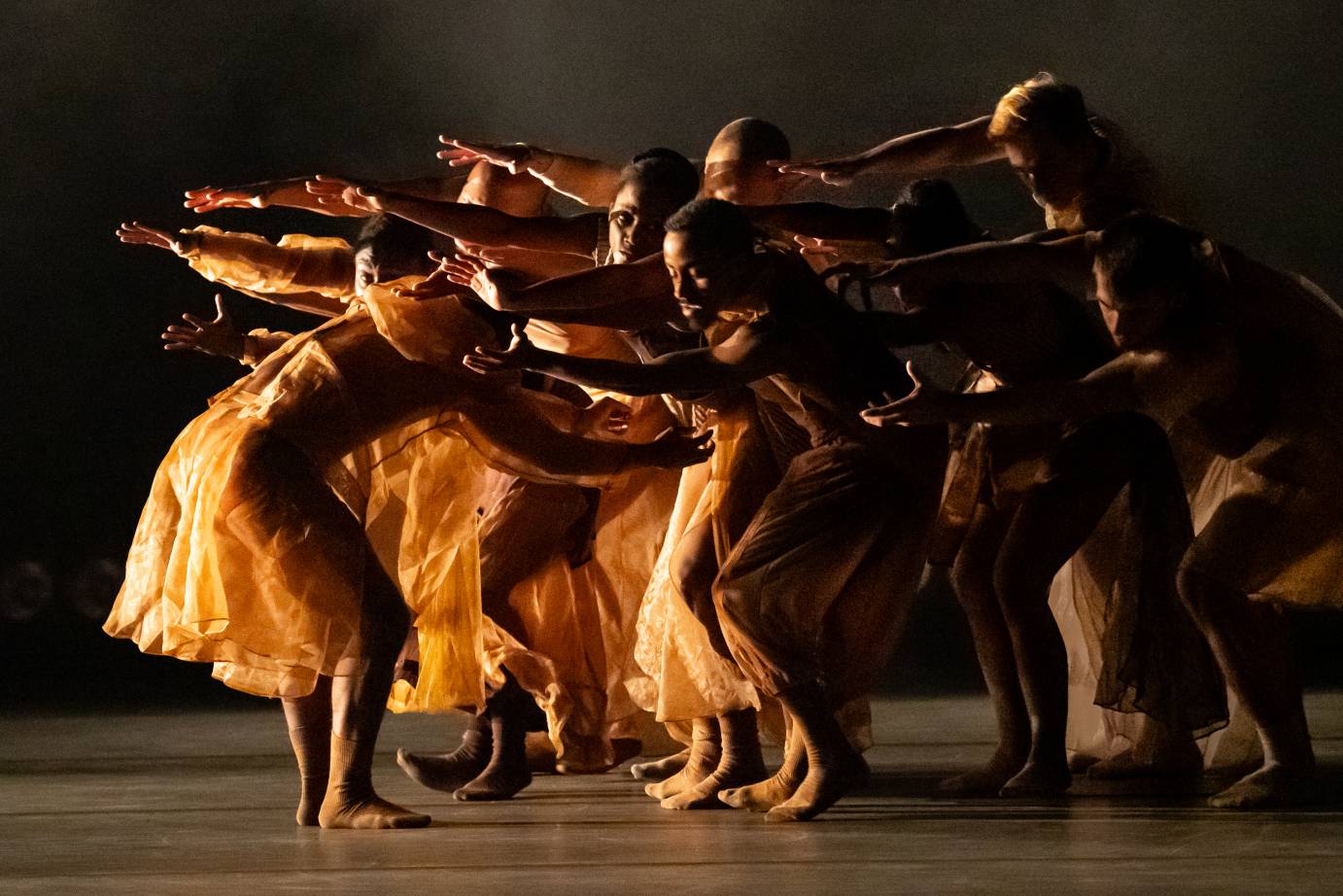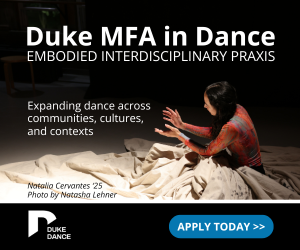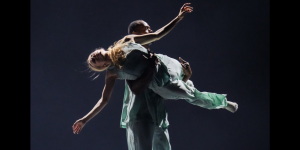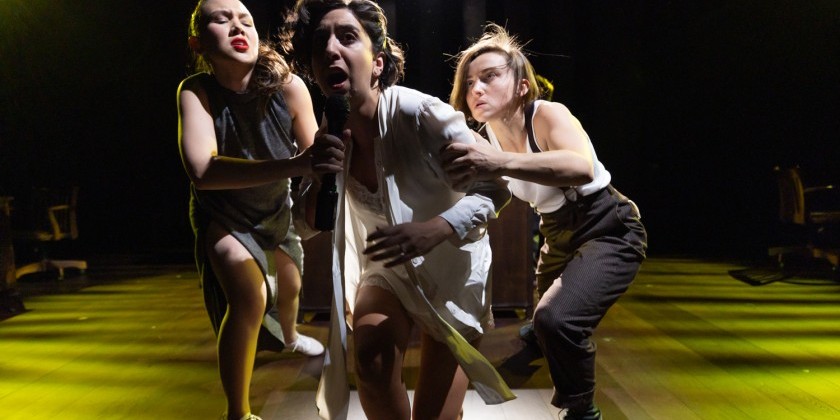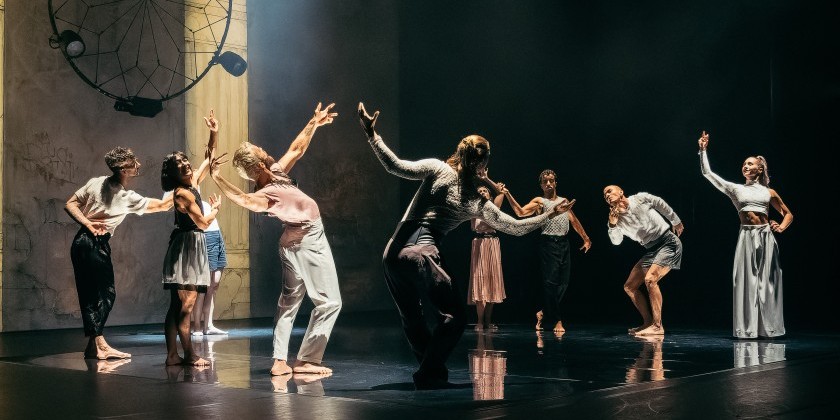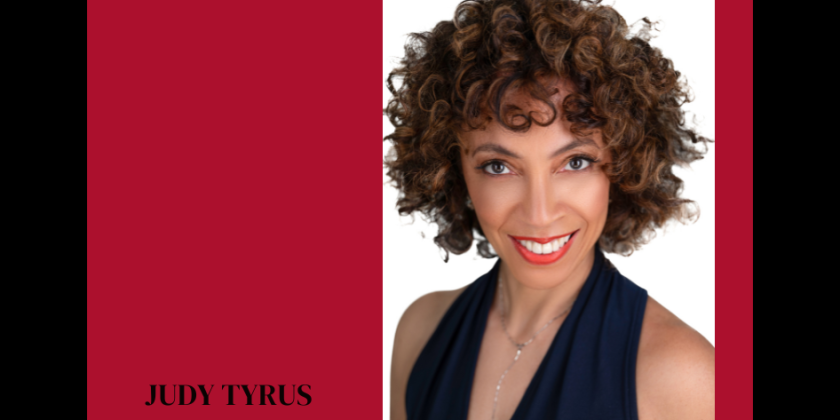IMPRESSIONS: Fall for Dance (Programs Two and Three) at New York City Center
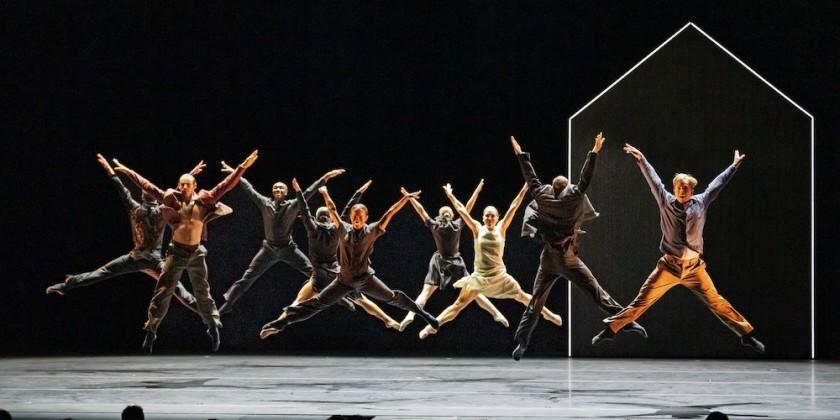
Falling In Love Again: Repetition and Rigor, Transportive Duets, and The Wow Factor
Fall for Dance
New York City Center, 131 W 55th St, New York, NY
Program Two and Three
September 18 and 20, 2025
For 22 years, Fall for Dance at New York City Center has spectacularly opened NYC's dance season. The festival offers unbelievably affordable tickets (this year's general admission cost between $23 - 30), and on every bill you will experience a top-tier lineup of dance artists from the United States and around the world. Bar none, it's the hottest dance ticket in town. This year, I scored coveted press tickets to Programs One, Two, and Three and was thrilled.
Being in the house for such a diverse range of dance encourages one to reflect on their tastes — what appeals, what doesn't, and why. What I relearned about myself is that I find the most successful and pleasing dance works (and artists) to be the ones that make me forget I am watching dance altogether.
For a detailed who's who of the artists, click here
Special thanks to Steven Pisano for sharing his photographs
To read about Program 1, click here
Repetition and Rigor: The Opening Works
Clara Furey/Bent Hollow's US premiere, Dog Rising (2021)
Dancers: Baco Lepage, Acosta Brian Mendez, and Jontae McCrory
*Opening piece of Fall For Dances' second program (version commissioned by the New York City Center for Fall for Dance)

Clara Furey/Bent Hollow. Photo: Steven Pisano
Three men dressed in primary colored sports gear inhabit a white stage. One stands in the right lower corner, pumping his shoulders as if warming up for a prize fight. Another, further upstage, lies on his side, and the third, still on the floor, adopts an odd "child's pose" using the side of his face as a balance point. From there, the vocabulary emerges — simple movement performed with dogged repetition — pumping, jumping, thrusting, punching the air, and isolating the hips, knees, and butts in pops. Driven by the music, movement dynamics range from task to obsession, from game to quest.
At times, the dancers seem mechanical, ecstatic, silly, or even maniacal. Watching the compulsive repetitions evolve, noticing certain movement fixations transfer from one person to another — the propulsive groove of it all was engaging for a time, but the length and insistence of this piece finally wore me down.
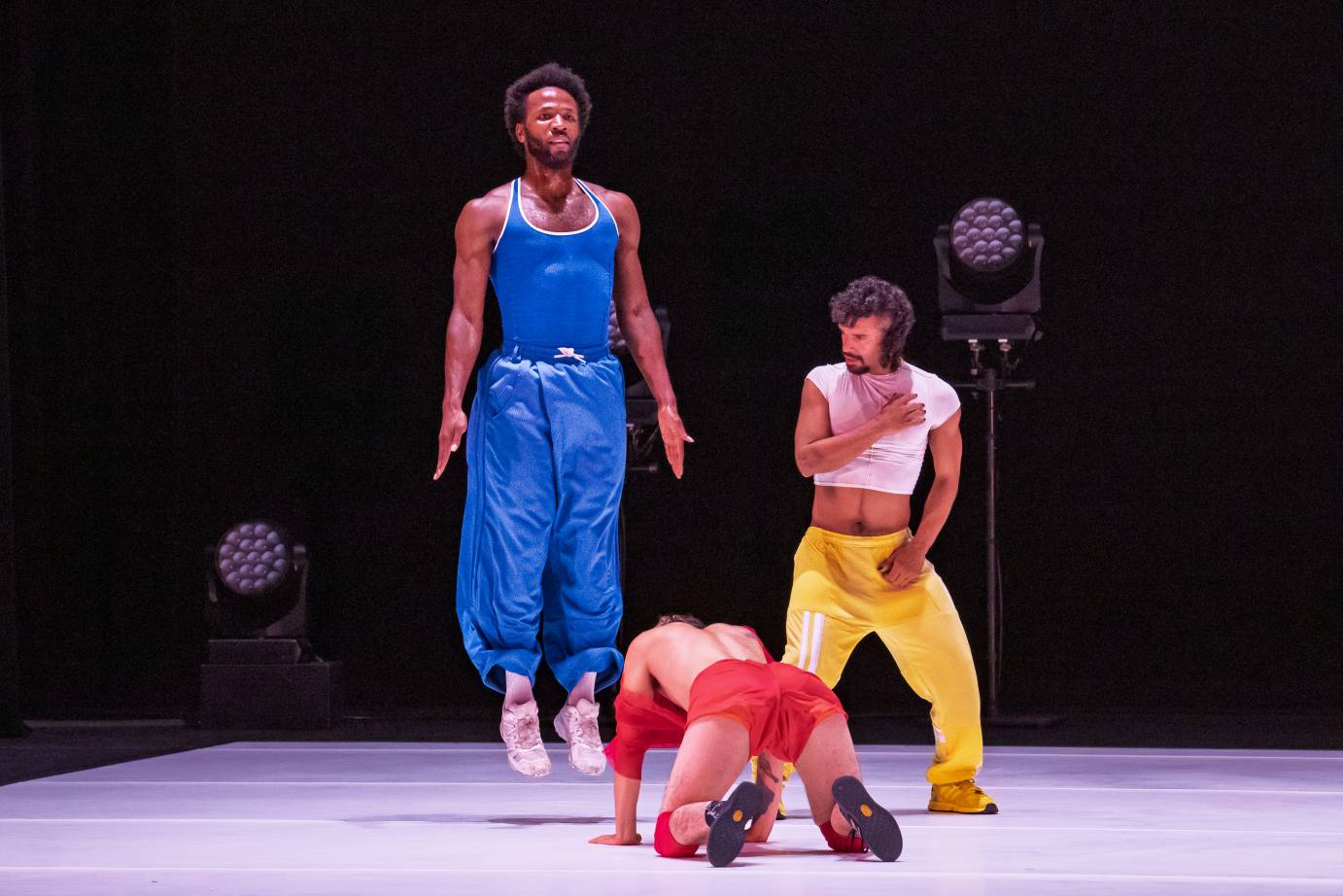
Lucinda Childs' Three Dances (for prepared piano) John Cage (2025)
Dancers: Gibney Company
*Opening piece for Fall for Dance's third program

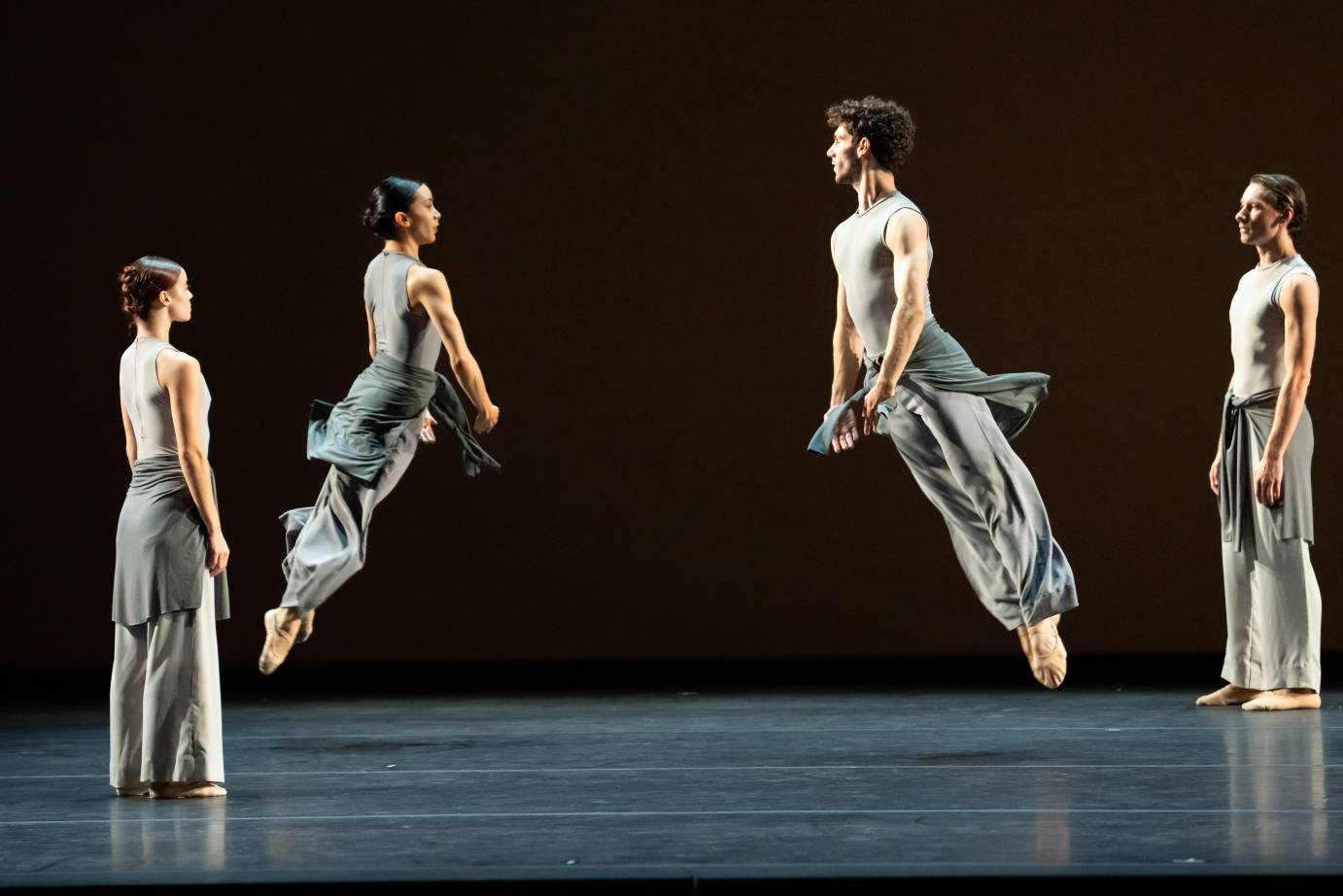
Lucinda Childs brings crystalline elegance to repetition and a sense of calm and play to John Cage's energetic polyrhythmic compositions. The stellar performers of the Gibney Company, clothed in wintry blue, loose rehearsal clothes — sweaters casually, but precisely, wrapped around their hips — are Childs' living, breathing paints. Their radiant lines and vibrant angles progress in a dazzling multiplicity of arrangements throughout the work. It all seems effortless — a heavenly ride of pure dance and rhythm, at once minimal and maximal.
My favorite section was the third, where Childs gives the artists solo turns, introduces more attack and determination to the movement, and every so often inserts a deep lunged plié with decorative arms into the vocabulary mix. (Those shapes somehow reminded me of Indonesian shadow puppetry.) Such a surprise, and entirely delightful.

Transportive Duets
Lil Buck & Davóne Tines
New York premiere of Resurrection (2025)
Co-presented with the Vail Dance Festival
*Second dance in Fall For Dance's second program
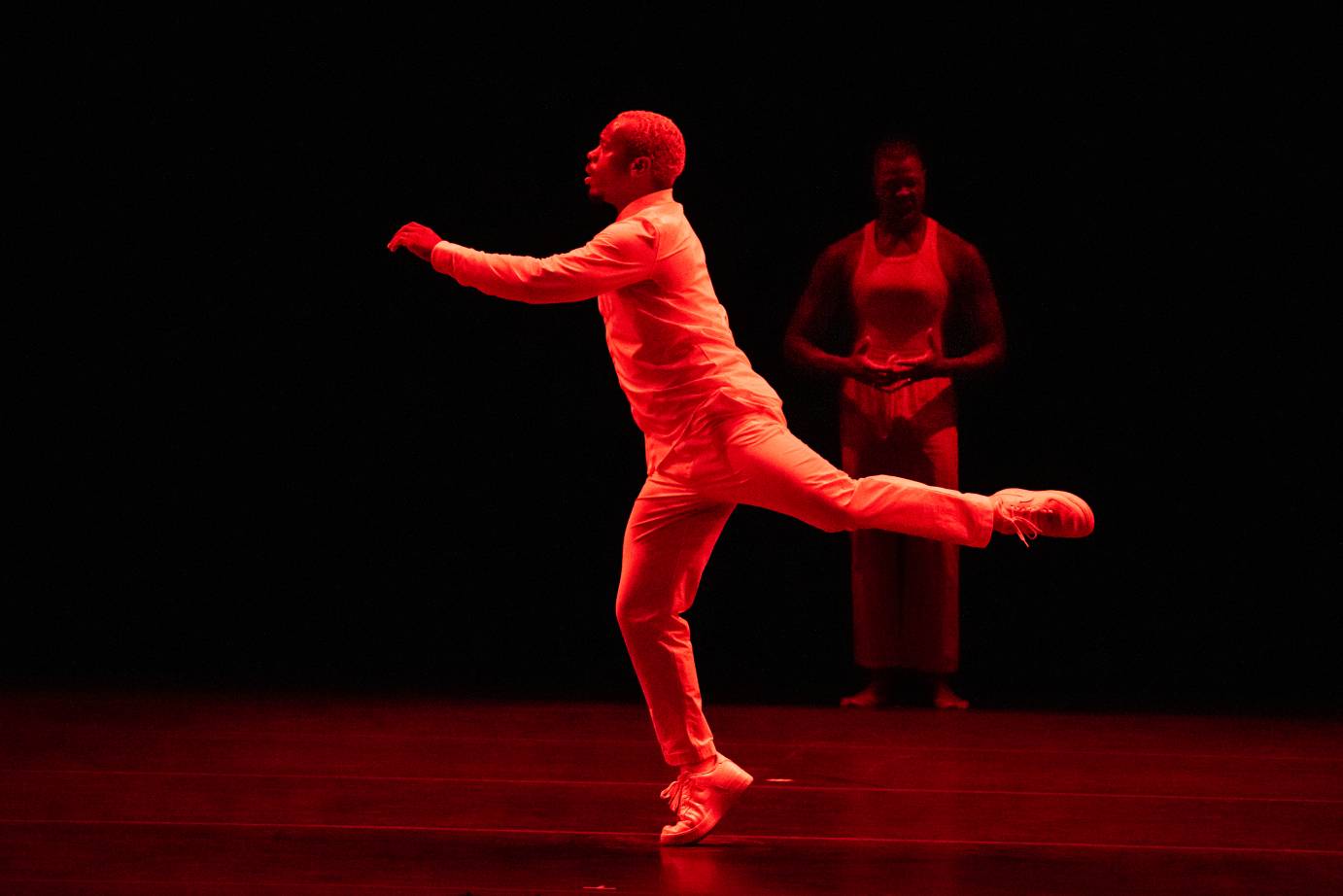
Lil Buck & Davóne Tines. Photo: Steven Pisano

Against a haunting, dark background barely lit in red, vocalist Davóne Tines' sonorous rendition of the hymn "By and By" pushes the dancer Lil Buck forward on a linear path towards us. The two artists are clothed in pure white, creating a stark contrast to the scene from which they emerge. This is the first time I've been fortunate enough to see Lil Buck live. I fell in love with his work watching the famous YouTube video of him dancing to Camille Saint-Saëns' "The Swan" in a duet with cellist Yo-Yo Ma (a collaboration also made possible by Damian Woetzel, artistic director of the Vail Dance Festival).
How Buck instinctively blends his Memphis jookin with contemporary and balletic language carries all these genres to an ethereal place. And, as Tines sings of flying away and flying free, we're transported by Bucks' gliding footwork, the way he floats as he holds a still shape, the palpitations of his hand mimicking a heartbeat, and his arms reflecting images of birds. Buck, a soul stretching beyond his limbs to find his final home, is buttressed by Tines, a one-person choir — yes, his voice creates and elicits that much power.

Hannah O'Neill and Hugo Marchand, courtesy of the Paris Opera Ballet
Jerome Robbins' Afternoon of a Faun (1953)
Plus a surprise excerpt from Angelin Preljocaj's Le Parc (1994 )
*Second dance in Fall for Dance's third program
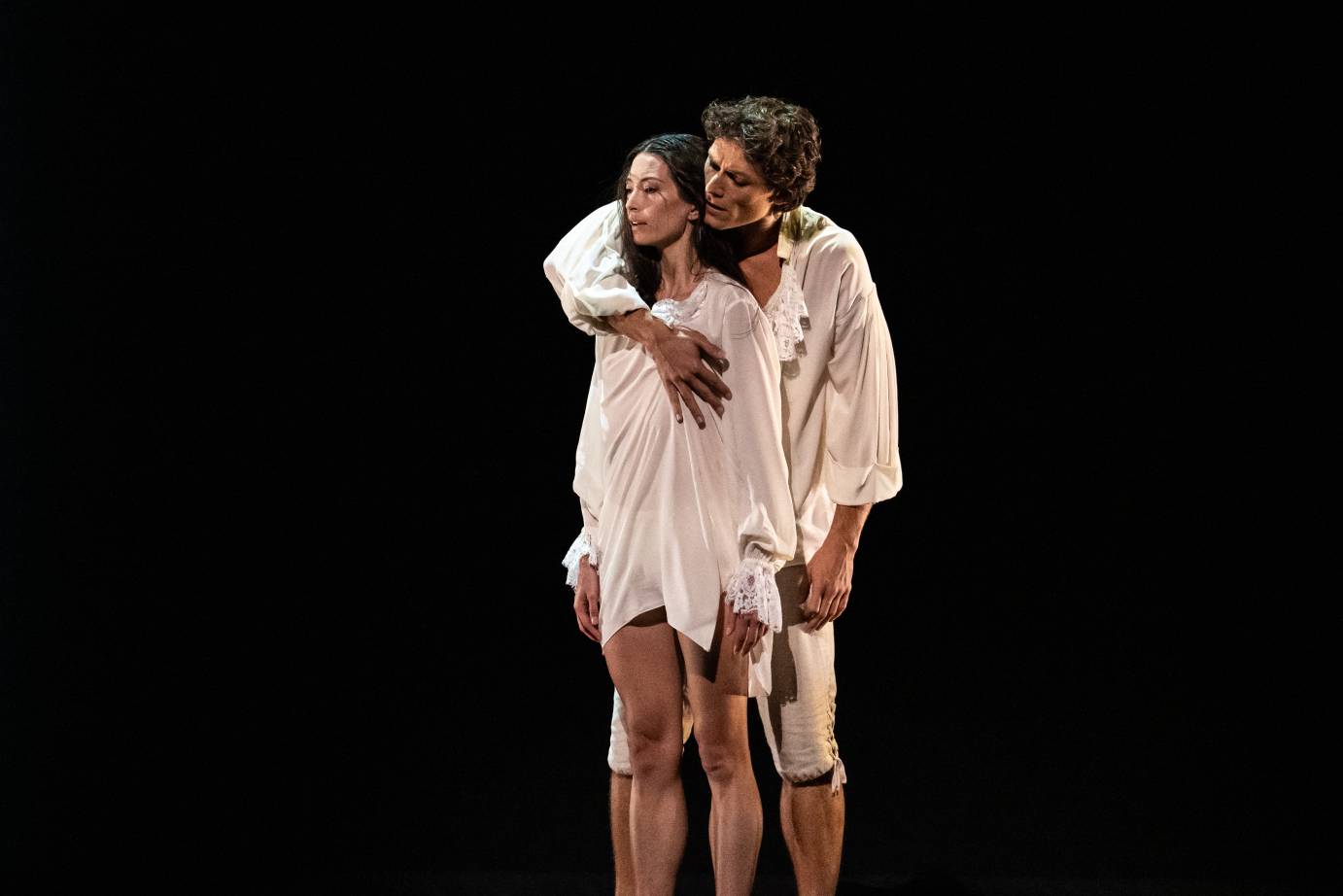
Part of the pleasure of encountering Hannah O'Neill and Hugo Marchand, the two étoiles of the Paris Opera Ballet, is their drop-dead physical gorgeousness — an Adonis and Aphrodite in the flesh. In Angelin Preljocaj's duet from Le Parc — a surprise addition to the program — the couple, dressed in loose 18th-century-style nightshirts (she with no leggings), gently caress themselves and each other as they make love through dance. On this evening, I didn't find the activity exceptionally sensual, and spent most of my time admiring the musculature of O'Neill's legs and her incredibly long hair.

The climax occurs when the two lovers engage in an astonishing kissing lift. O'Neill plants her lips on Marchand's, and placing her arms around his neck, they spin, traveling in a whirl as her legs extend and suspend behind her. Had I believed from the start that Marchand and O'Neill were intoxicated by each other, this wonderful moment, would have, most likely, turned me to jelly.
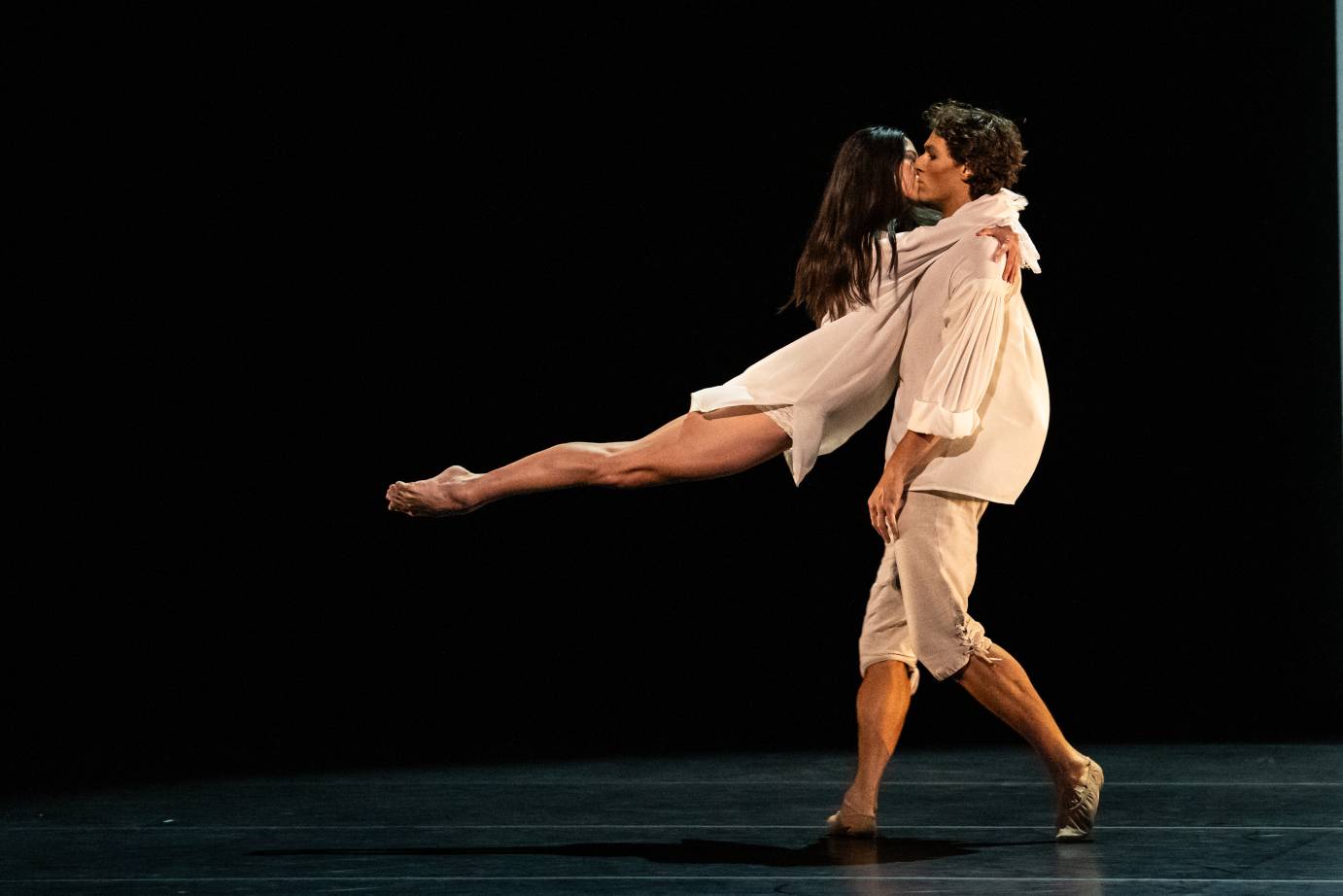
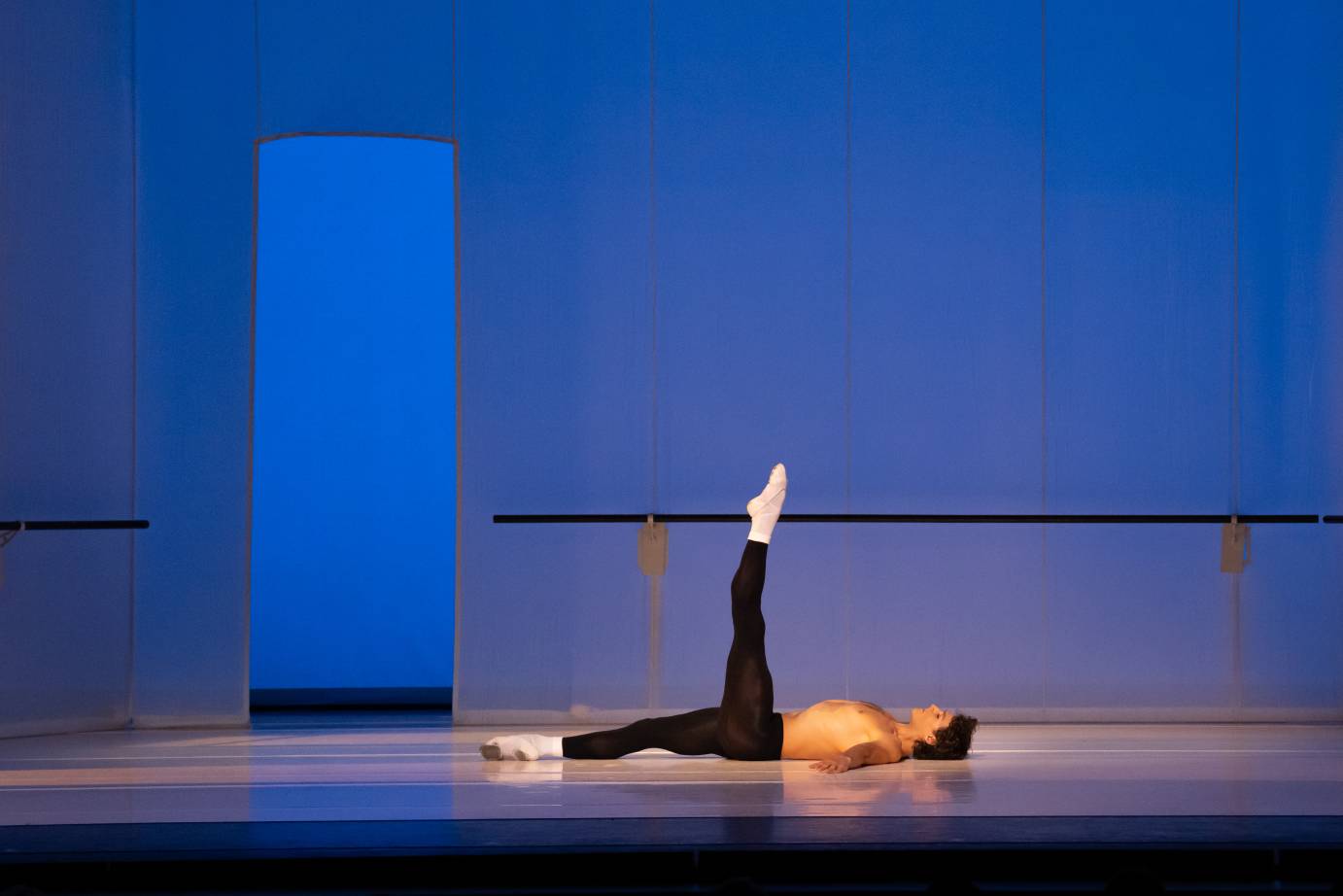
By contrast, Jerome Robbins' Afternoon of a Faun, a direct conversation with Vaslav Nijinsky's (at the time controversial) L'Après-midi d'un Faune (1912) comes across as a stronger tribute to youth, beauty, sensuality, and sexuality while not overtly portraying it.
Set in a ballet studio, with barres and a large mirror (the mirror, in this case, being us, the audience), we meet a young danseur lying on his back as he extends one long, erect leg toward the ceiling. From there, accompanied by the evocative music of Claude Debussy, he marvels at himself in the mirror, lost in what his perfection can accomplish, until she, a rare creature, the ballerina, enters. Somehow, we're uncertain whether she's real or a mirage.
The two take each other in, more besotted by their own reflections than one another. This is not so much narcissistic as it is youthful, the turning point when the young first discover and acknowledge their beauty and its prowess. O'Neill and Marchand are perfection here, and Robbins' unconventional staging of eroticism in a ballet studio is still, after 72 years, genius.
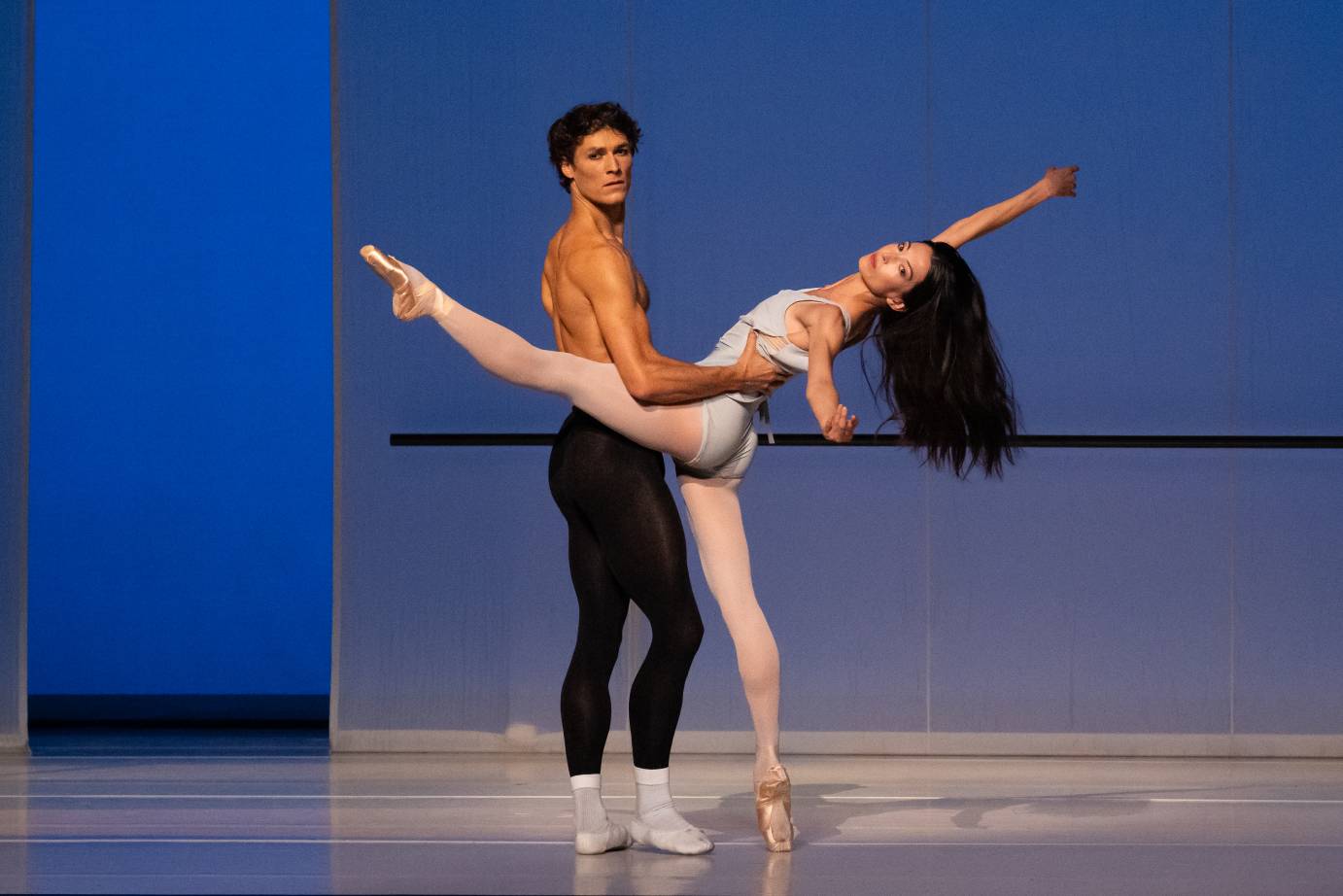
The Wow Factor: Grand Finales
Hubbard Street Dance Chicago in Impasse (2020)
Choreography by Johan Inger
*Finale of Fall for Dance's second program

Hubbard Street Dance Chicago. Photo: Steven Pisano
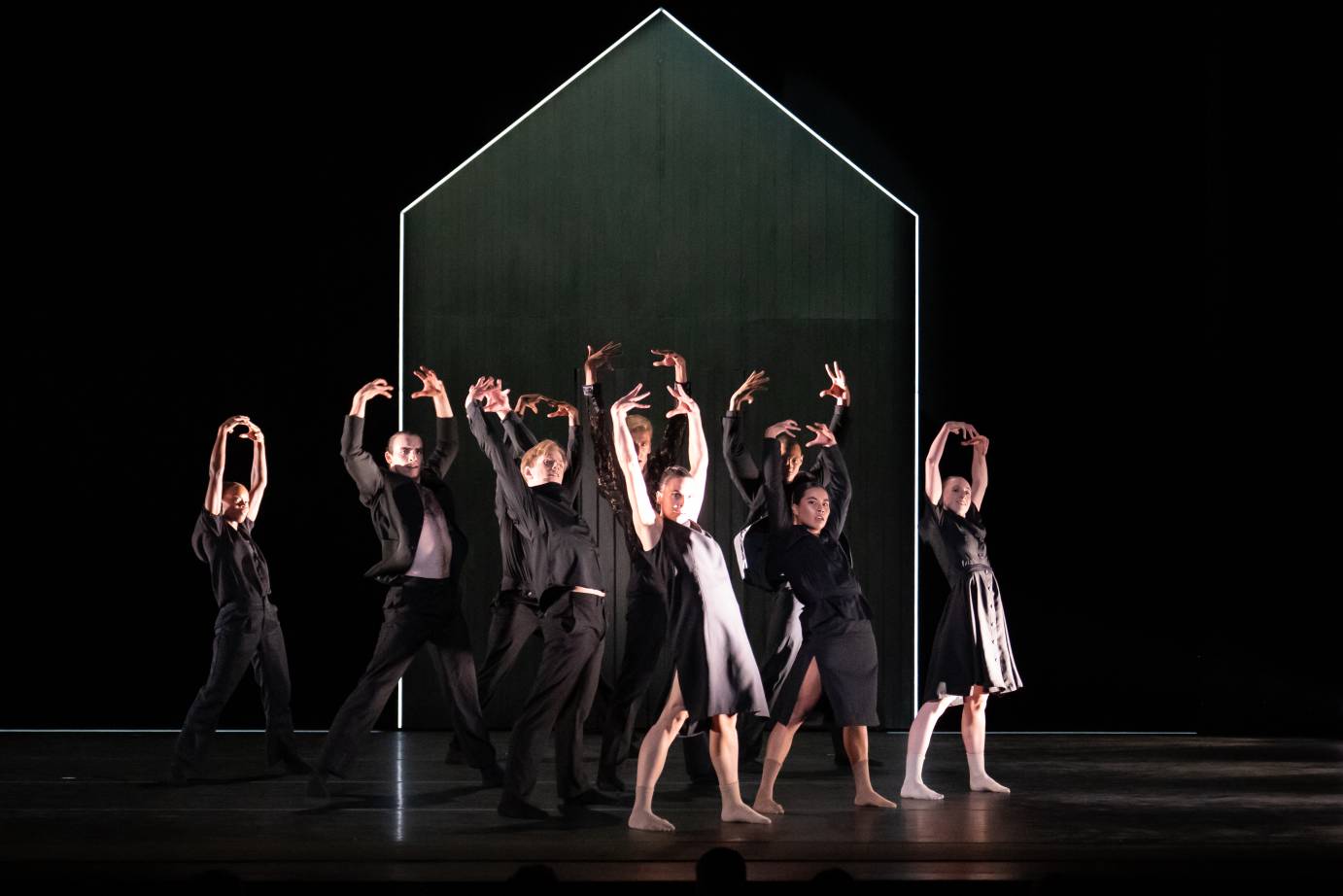
Johan Inger's Impasse, danced by the outstanding artists of Hubbard Street Dance Chicago, immerses us in a surreal space that's both electrifying and comical. Truly, out of the ordinary and unexpected, Inger throws "everything but the kitchen sink" into this choreography (something I'm sure teachers of the art warn their students not to do) and rivets us. What holds the insanity together is a set of houses designed by Inger, through which a circus of characters and ways of moving are introduced. Obviously, I don't get out enough, as this was my first encounter with the choreographer. I need to see more of Inger's work and also arrange a field trip to Chicago to enjoy the excellent company of Hubbard Street.
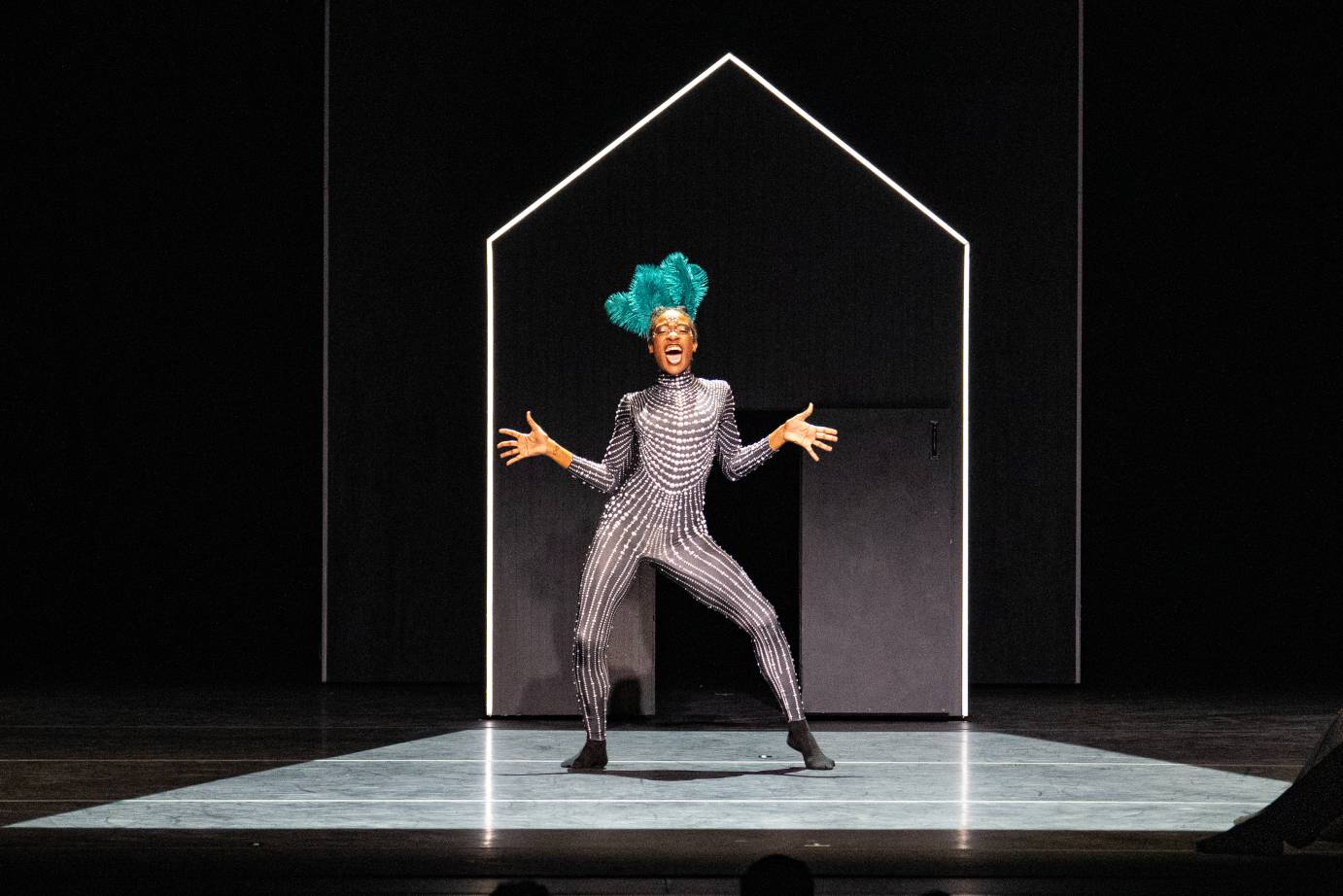
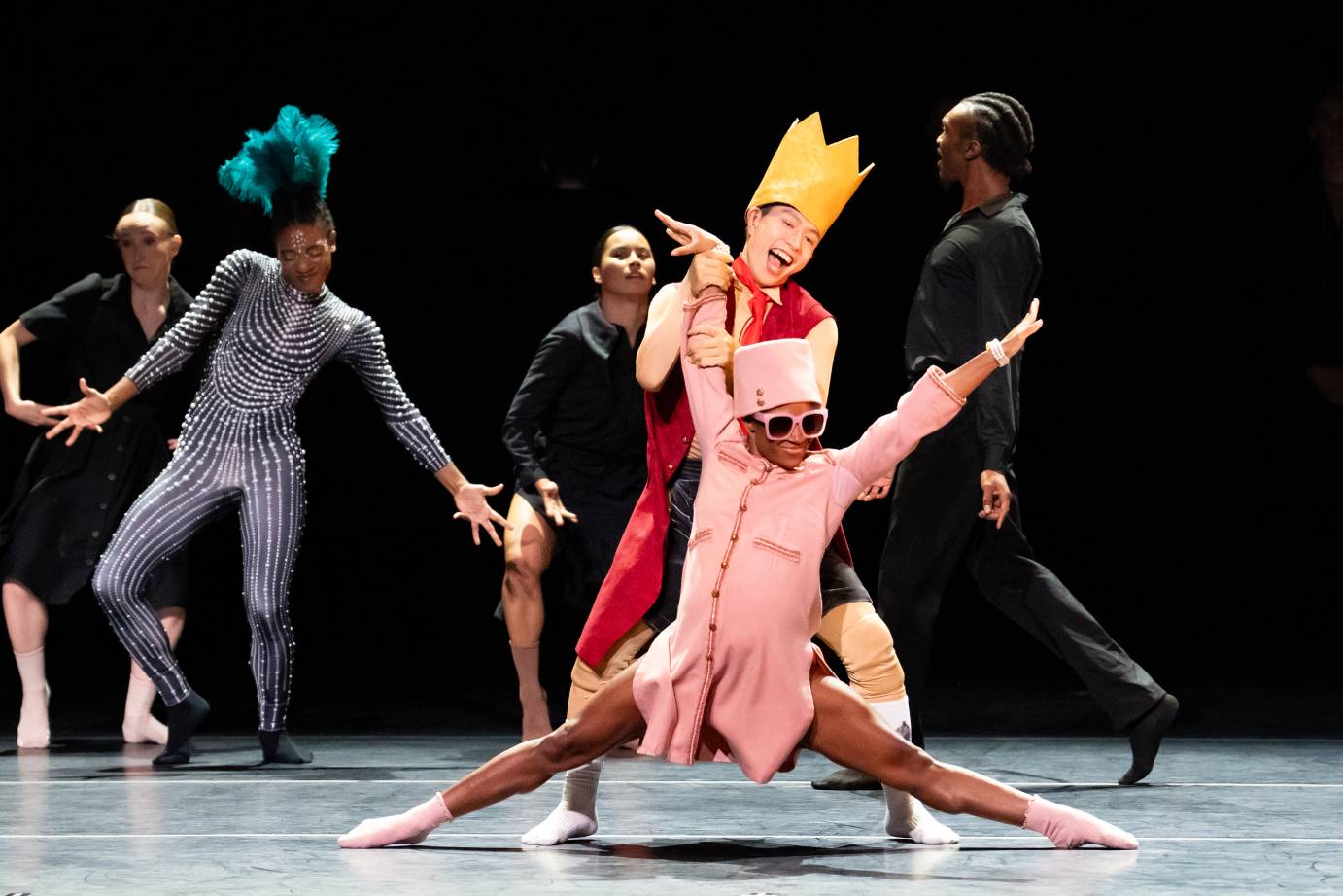
KnoName Artist l Roderick George
World Premiere of The Missing Fruit: Part 1 (2025)
Commissioned by the NY City Center for the Fall for Dance Festival
*Finale of Fall for Dances third program
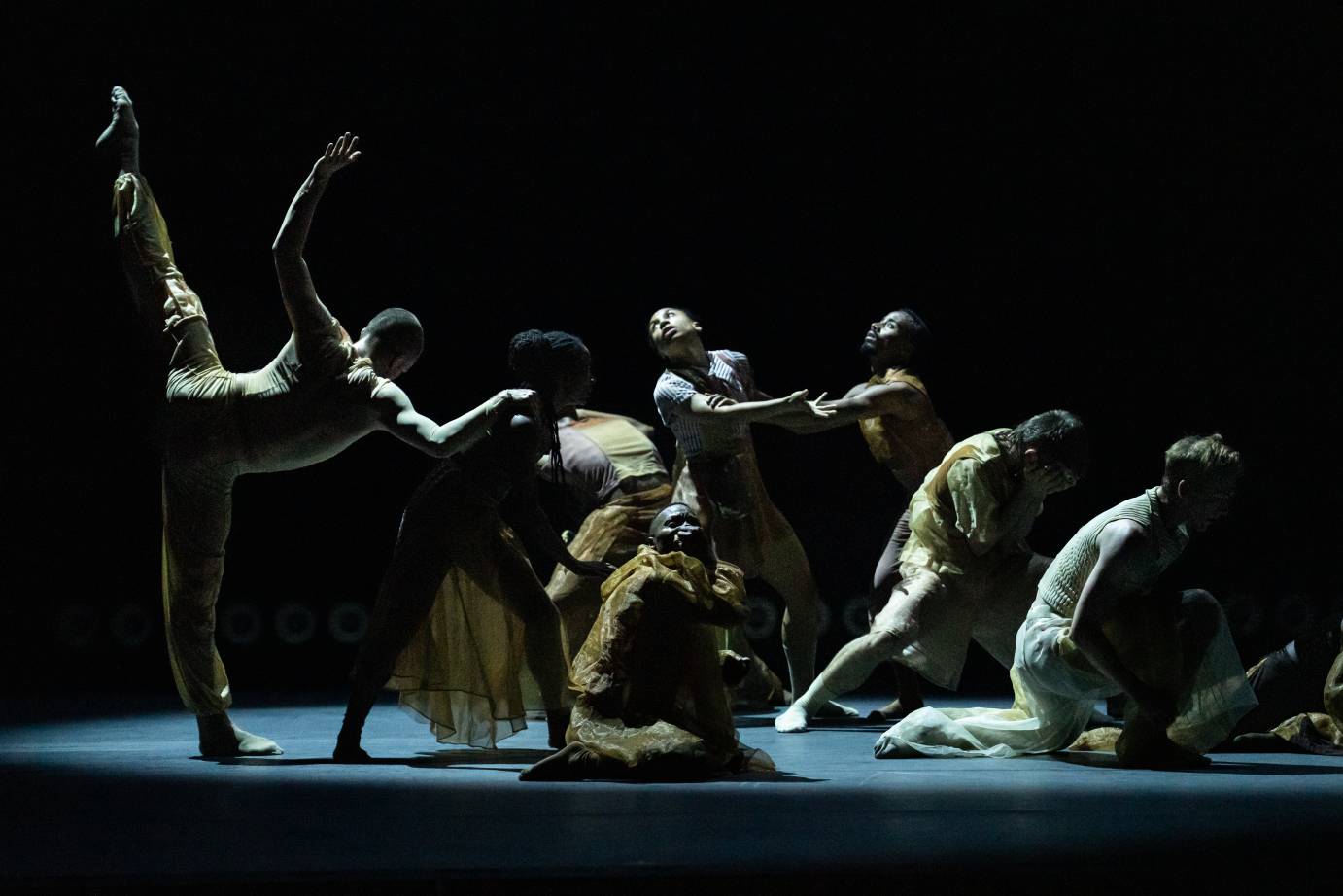
KnoName Artist. Photo: Steven Pisano
Roderick George's The Missing Fruit (Part 1), described in the program as both a world premiere and a developing excerpt, explores extremes: life and death, darkness and light, terror and joy, past and present. These are George's contemplations of the Black experience in our American system. His environment, exceptionally lit by Connor Sale, seems located between definitive borders, a place where the ghosts of history and the dreams of the future can sail past each other and converse.
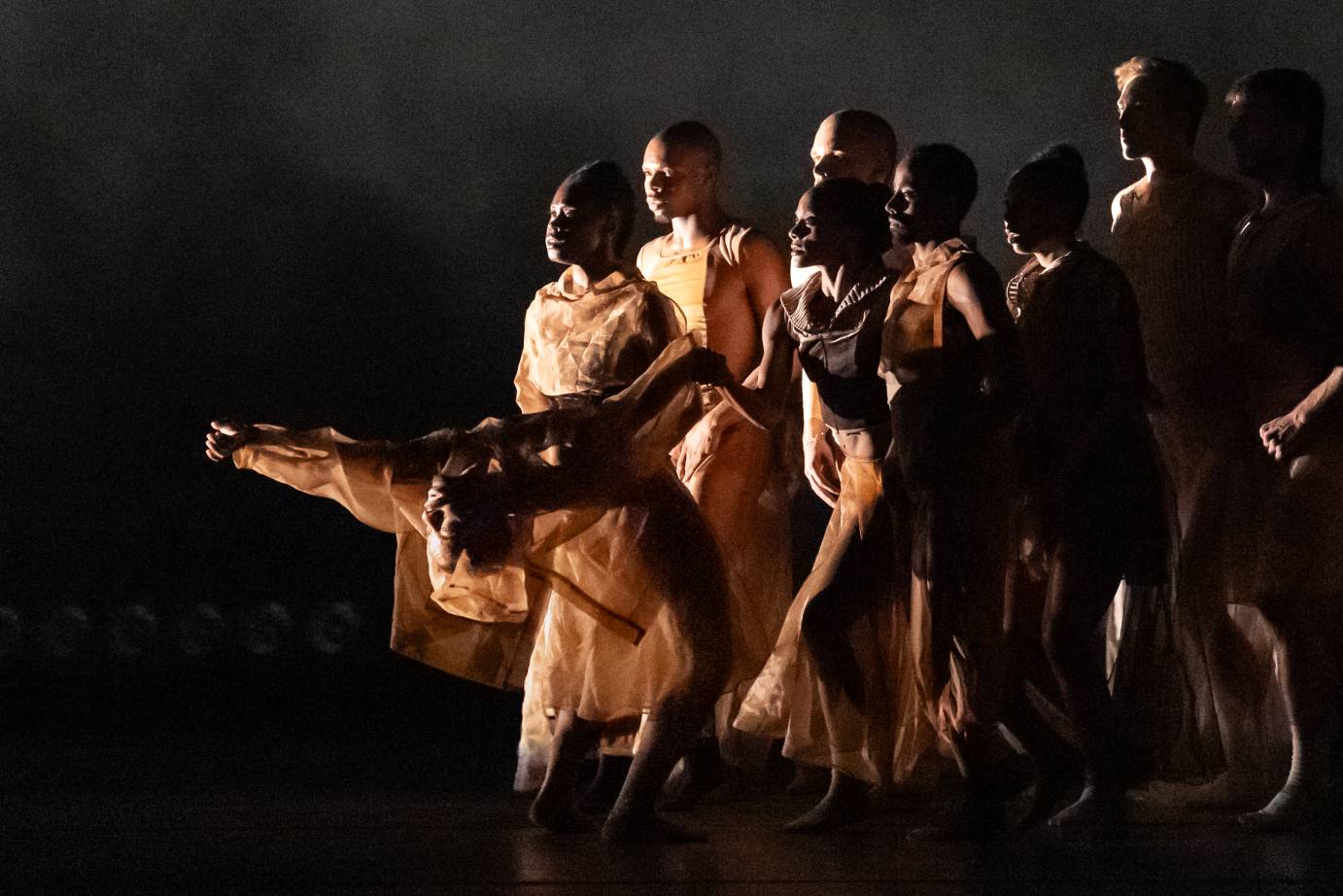
Often, the dancers move purposefully in groups, bonded, regardless of whether their activity suggests emerging from a nightmare or rushing towards a fresh, exhilarating path. Beyond first-rate, the dancing here is ferocious. I am only familiar with George and MJ Edwards, of whom I am an avowed fan. I wish I could single out the other artists by name, especially the breakout soloists.
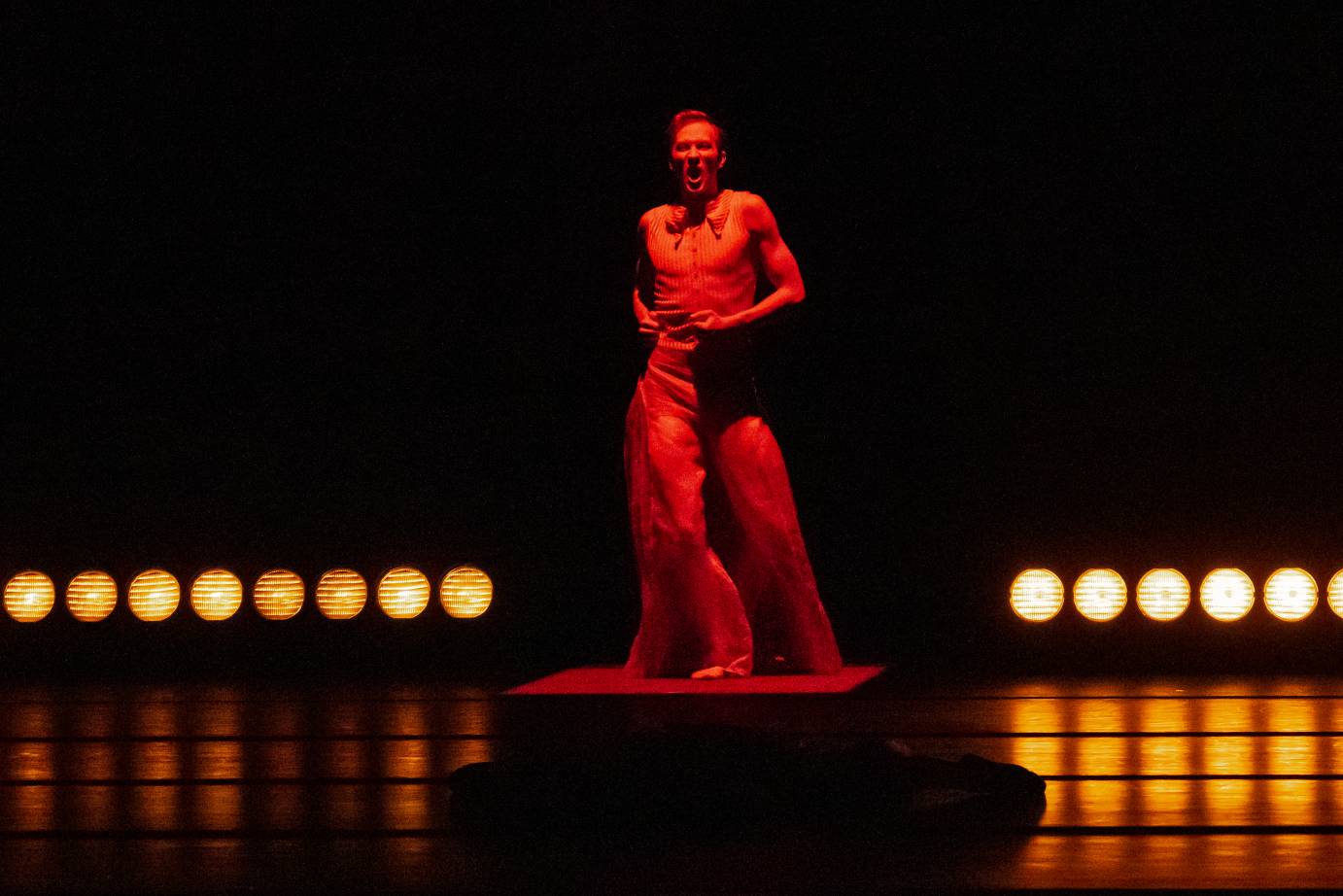
The Missing Fruit (Part 1) is as engrossing as it is disturbing. Beginning with a soloist chanting "red rum, red rum, red rum" or "murder" spoken backwards (a reference to the Stanley Kubrick 1980 horror film, "The Shining"), it ends with a knockout duet between George and the chanting soloist. Then, out of nowhere, a gunshot is fired. George is down, murdered, blood pouring from his costume.
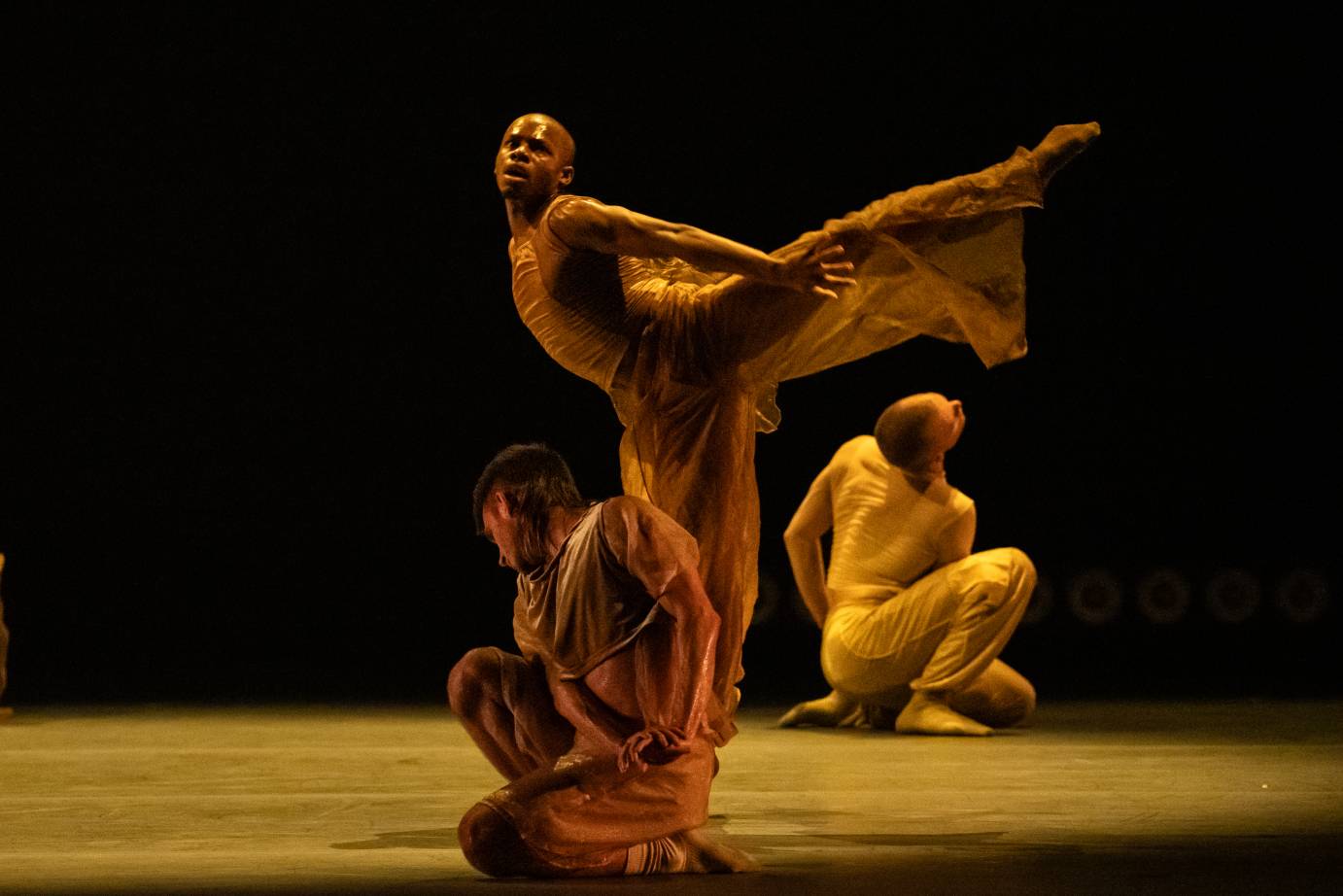
As the lights come up for the bow, we notice that the blood is actually red glitter, but the gunshot sound was all too realistic. This, on the back of the assassination of Charlie Kirk on September 10th (and mass shootings in Colorado, Utah, and Alabama, only days after) jarred my system. Despite some joy, George begins and ends his piece with violence. What does this say about his contemplation of the Black experience, or on any experience for that matter? An artist reflects his times, and what the times are telling us is to watch our backs.
